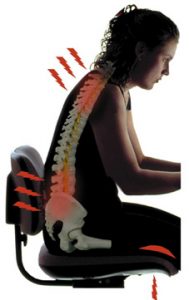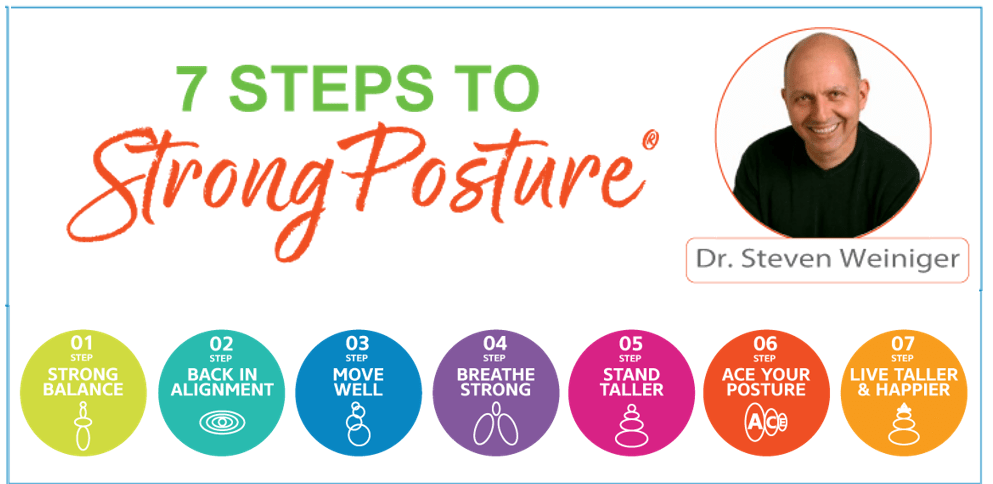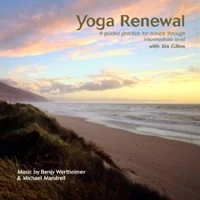All motion begins with posture, and all motion ends with posture.
That’s part of the second Posture Principle from Dr. Steven Weiniger’s book Stand Taller-Live Longer: A Posture & Anti-Aging Strategy – and the reason his at-home program is used by clinicians to integrate online exercise and education with interactive demos.
For the yoga teacher, it’s an at-home framework for the individual to progressively target the weakest and most neglected link(s) in their unique kinetic chain by focusing upon the subtle and simple motions each of the 7 steps to step to strengthen the beginning point of all motion: posture.
But just what is good posture anyway? Dr. Weiniger explains in the article below, cross-posted from his blog. We’re grateful to him for letting us share it with you…
What does “good posture” look like?
It’s not what you think!

Studies show sedentary, sitting habits take a significant toll on posture, back pain and health. Diving deeper than “I know it when I see it”- What does “better posture” look like, and why? It’s not the idealized manikins you see, the ones with theoretic dots on the ear, shoulder, hip and ankle because our bodies are different. We’re each subtly unique, which is the problem with solutions to fix posture to be “correct“.
Your posture might not be good, but it’s probably balanced
Sitting or standing, walking or running, watching TV or checking Facebook – if you’re not falling down, your posture is balanced. We’re using muscles and leveraging joints to stay vertical. So the question becomes: What do we see when objectively looking at an individual with functionally stronger posture? Towards vertical is good, but perfectly straight may not be right for that body.
Patient Posture Perception

Also and not surprisingly, most people’s habitual sitting posture appears far worse than the posture they assumed for the moment they focused on “good” posture.
These are two elephants standing (or sitting, or walking around) in the room of posture: Awareness and uniqueness. Our internal body awareness, and the actual patterns in which we’re aligning of our body mass in space, are not the same. To function, our physical body must balance- otherwise we fall down.
Posture Is Unique

The core of biomechanics is the core… the muscles connecting and controlling the top of our body that sees and manipulates our environment, with the pelvis and lower extremity that gets us around. The key to functionally stronger posture is connecting our body perception more accurately to reality, and engaging accurate core control.
And the best way to begin is by focusing on each body mass, each PostureZone®, and focusing your attention to something objective, something external to your body. Beginning with how your balance your body.
Controlling body balance towards vertical is the beginning of looking at posture because posture is less about how it looks, and more about how it feels and functions. Appearance is a measurement, but we need to look at how that connects to function and control – which is why we begin the process of retraining posture patterns with StrongPosture® Stork [a one-leg balancing pose, which you can see demonstrated here].
If you find that your one-leg balance is different or weaker on one side, chances are that you’re subtly – or not so subtly – using different muscle patterns on each side. Those motor pattern asymmetries likely drive every step you take – and even every yoga pose. This is all the more reason to focus on postural improvements.
And you’ve got an upcoming opportunity to do so, as we’ll be hosting a live webinar with Dr. Weiniger, based on his 7 Steps to StrongPosture® online self-care program. In this webinar, you’ll learn
- How to integrate movement and breath with three simple exercises that will improve your posture and change your yoga practice.
- How to improve posture for back pain, neck pain, and just about any neuro-musculoskeletal (NMS) condition.
- Tips for strengthening breathing and overall wellness to improve energy and even how you look.
We hope you’ll join us on July 31, 9-10am (PDT) for what’s sure to be an amazing, informative, and motivating conversation! REGISTER NOW
Image of seated woman by Skoivuma,
image of seated man by Ananian, via Wikimedia Commons





